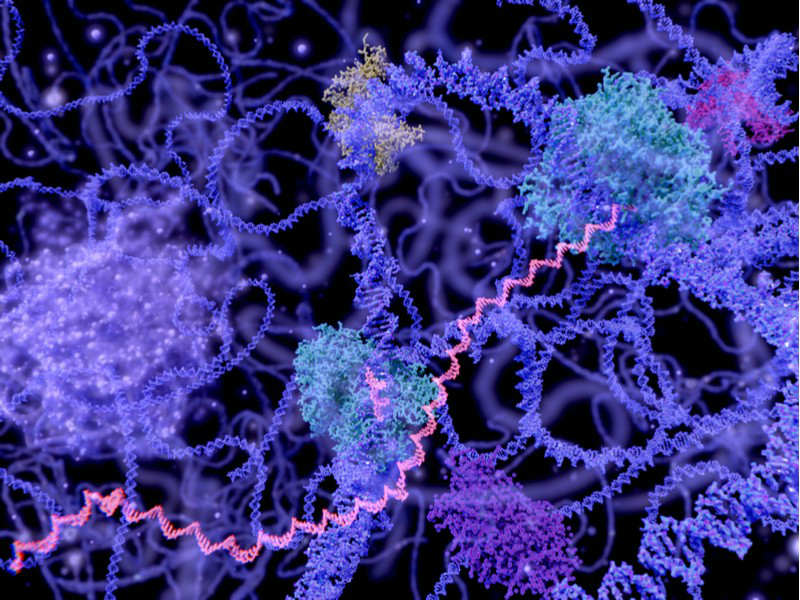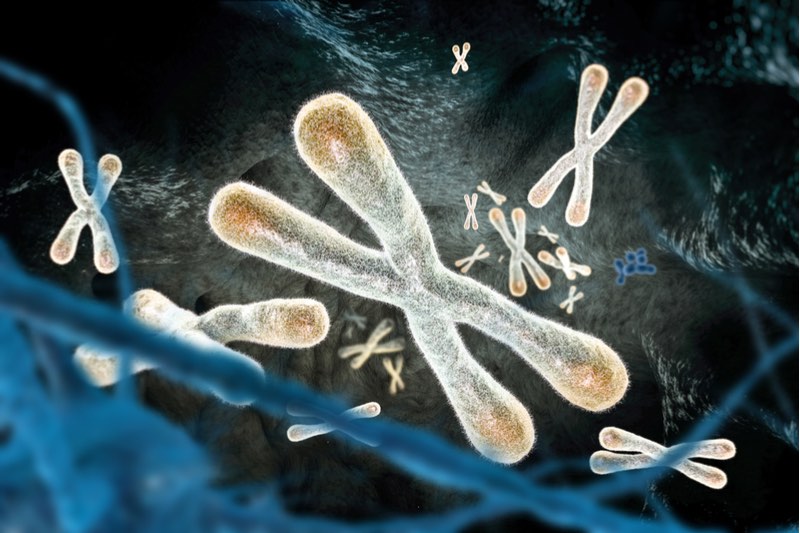Searching for the fountain of eternal youth has been the dream of humanity for millennia. While this is still in the realm of science fiction, anti-aging companies are hoping to tackle age-related diseases by targeting the underlying biology of aging.
While we’ve been hunting for immortality for millennia, there hasn’t been much success. However, an emerging field of research is trying to combat aging, helping us – as well as our pets – stay healthy as we become older.
Age is a big risk factor for common diseases, including dementia, cardiovascular disease, and cancer. Even the Covid-19 pandemic this year has proved more dangerous for older people than for young people. Anti-aging research is built on the idea that slowing the aging process can therefore prevent multiple age-related diseases in one go. The goal is to replicate what happens to supercentenarians: lucky individuals who experience few health problems until extreme old age.
The biology of aging is monstrously complex, but researchers have narrowed it down to a list of key hallmarks of aging, which include cells breaking down, lack of stem cells in tissues, and unstable DNA.
Targeting ‘zombie’ cells
Most cells in our body are programmed to die after a certain period of time. All the cells that form our skin are replaced within a month, while the cells in our liver are renewed after a year.
When we age, this renewal slows down as our cells stop being able to multiply. These cells become zombies — they are not yet dead but they can no longer perform their function. This process is known as senescence, and is believed to underlie the aging process in many of our tissues.
Barcelona-based company Senolytx aims to slow the aging process by removing these senescent cells from our tissues. “When we’re young, we get senescent cells constantly,” says Timothy Cash, CSO of Senolytx. “When we get a wound, senescent cells will form, but they will be removed after their job is done. When we get older, for some reason, senescent cells show up throughout the body but they’re not removed.”

The company is developing small molecule drugs called senolytics that clear senescent cells from tissues affected by age-related diseases, such as idiopathic pulmonary fibrosis. Currently in the preclinical stage, Senolytx is also developing these drugs for combination therapies in cancer, with the goal of removing senescent cells left by chemotherapy.
Senolytx isn’t the only company working on senolytics. In fact, one such drug developed by the high-profile US company Unity Biotechnology failed to treat osteoarthritis in phase II this year, proving a major setback for the field.
Nonetheless, Senolytx has other approaches up its sleeve. For example, it’s developing drugs to stop senescent cells from harming the tissue around them instead of killing them. Another strategy — out-licensed to the Swiss company Rejuversen — is to stop senescent cells hiding from the immune system, which happens more in older people than in young people.
“This might happen because the immune system isn’t as good as it was at training immune cells,” Cash told me. “But I think it’s even more likely that the senescent cells have become sneaky and tricky, and have blocked the immune system from clearing them.”
Replacing old tissue
Since aging is thought to be caused by senescent cells that can no longer multiply, US company AgeX Therapeutics seeks to tackle it using pluripotent stem cells, which can theoretically divide forever. “All of us are descendants of a lineage of cells that has lasted for billions of years,” said Mike West, CEO of the US company AgeX Therapeutics.
AgeX develops stem cell therapies for age-related diseases such as cardiovascular disease and type 2 diabetes. According to West, treating these diseases with regenerative cell therapy is akin to treating the aging process itself, like replacing old parts with new. “A valid way of keeping cars on the road is replacing one of the components,” he told me.
The company can transform the stem cells into specific cell types that replace lost tissue. For example, one of its experimental therapies is intended to treat type 2 diabetes by replacing lost brown fat cells.
AgeX is also developing potentially revolutionary drugs to treat the aging process. These drugs are designed to partially revert adult cells back to a stem cell stage, letting them multiply and regenerate damaged tissue, just like the axolotl.
These treatments have been met with some skepticism from experts in the field. Some of the big objections put forward are that the aging process is incredibly complex, and that senescence is an unavoidable consequence for all our cells.
However, West is enthusiastic about the possibilities. “Bringing the cells partway back to a regenerative mode in humans has kind of been done in a couple of papers,” West told me. “It’s a new idea, for sure, and I welcome skepticism. It’s fun to be the only person doing something.”
Lengthening telomeres
Every time an adult cell divides, the protective ends of its chromosomes, called telomeres, get shorter. When telomeres reach a certain length, the cells are unable to reproduce anymore and aging ensues. The discovery of telomeres and their role in cell aging in the 1980s earned the investigators a Nobel Prize in 2009.
There are now companies developing telomere-lengthening products to combat aging, including a controversial gene therapy that was claimed to have lengthened the telomeres of a US CEO. However, according to Joachim Lingner, a researcher at the Ecole Polytechnique Fédéral de Lausanne, this approach is risky.
“I think many companies claim they can manipulate telomere length,” Lingner explained. “But these drugs have not really been thoroughly tested and I have serious doubts that they actually have any effect.”

Another big risk of playing with telomere length in anti-aging research is it could cause cancer, where cells replicate out of control. Shortening telomeres limit the number of possible replications of a cell, so paradoxically, this mechanism may be keeping us alive for longer. The majority of cancers dodge this mechanism, meaning this avenue could be exploited to make new drugs treating cancer.
Lingner’s research group studies the molecular machinery behind telomeres, comparing the telomeres of healthy cells with those of cancer cells. The group has collaborated with Boehringer Ingelheim to screen potential treatments targeting telomeres, but the big pharma ended up dropping the collaboration. “My attempts to have companies interested in this technology were in fact rather frustrating — I basically gave up,” said Lingner, who’s continued his quest to illuminate the complex biology of telomeres in spite of the limited commercial interest.
Repairing the mitochondria
Healthy mitochondria are vital for cells to function normally. Unlike other structures in the cell, mitochondria contain their own DNA, which can become faulty with age as mutations accumulate.
According to Daniel Ives, CEO of the UK company Shift Bioscience, targeting faulty mitochondria could be the most effective way to tackle the aging process.
“Imagine that you have a network where some of the biological hallmarks of aging are better connected than others,” Ives explained. “Mitochondria are a very central hallmark – out of all of them, the most central. If you can affect the central node, you can have a disproportionate effect on that network.”
Shift Bioscience is developing small molecule drugs that can repair the damage to mitochondrial DNA using a repair mechanism called the shift effect. It essentially consists in forcing the mitochondria to compete with each other for nutrients, making sure that only healthy mitochondria survive.
“The shift effect evolved to get rid of mutations in mitochondrial DNA,” Ives explained. The phenomenon has been identified for many years, but artificially triggering it in cells has only recently been achieved.

The company is targeting MELAS, a rare mitochondrial disorder that causes dementia and seizures. The lead candidate drug is currently completing preclinical studies that, if successful, will lead to a phase I clinical trial in healthy volunteers.
“You probably won’t believe your luck being on that phase I trial,” commented Ives. “Not only are you getting paid, but you’re getting paid to take a drug that potentially has an anti-aging activity. It sounds like the best deal I’ve ever heard of.”
How close are we to an anti-aging treatment?
Anti-aging has recently begun attracting big investments. Google, for example, has poured money into the US biotech Calico, while the CEO of Amazon and the Mayo Clinic are backing the company Unity Biotechnology.
“Investor interest in anti-aging has already plateaued,” Cash said. “I would say I can’t see it getting any higher. I think it’s at its peak now.”
That said, developing anti-aging treatments is currently challenging because aging is not an official disease according to regulatory authorities such as the EMA and FDA. Companies are therefore forced to target a specific age-related disease with each study. The American Federation for Aging Research aims to buck this trend with a clinical trial that will measure the effect of the approved diabetes drug metformin on multiple age-related conditions instead of just one.
Cash believes that it’s time to accept the aging process as an official target for drug development. “Maybe in the future, once we have motivated the FDA and EMA to start considering aging as an indication, we can use these molecules that we’ve found for age-related diseases for aging in general,” he added.
Another challenge could be the biotech industry’s approach to finding anti-aging treatments. “Companies are investing in each one of the hallmarks of aging, saying ‘let’s have a horse in the race for every one of these hallmarks and maybe one will work out,’” Ives said. “This model doesn’t confront the fact that we don’t know everything there is to know about aging.”
Furthermore, there are mixed opinions regarding the feasibility of finding an anti-aging treatment in the near future. The phase II failure of Unity Biotechnology’s senolytic candidate in osteoarthritis was the most recent focus of this debate. However, Cash was enthusiastic about the prospects.
“There are those who think aging is a stochastic process involving too many pathways and too many processes, and we’re never going to find a drug to hit all those processes,” he said. “I think data – genetic data and pharmacological data in animals – do not suggest that and do not support that. It actually supports that we can hit individual targets and extend lifespan.”
However, Lingner was less confident. “I think one of the major issues in aging are the genetic changes that occur and the epigenetic deregulation that accumulates in cells,” he explained. “This is difficult to reverse. I think it will never be possible, but I may be wrong.”
Many of the anti-aging treatments in development are showing promise in animal models such as worms and mice. While encouraging, these animals differ a lot from humans in the way they age. Any organizations or companies developing anti-aging treatments have to endure the lengthy clinical testing process to prove that these treatments do make a difference in humans.
Until we can see clinical proof, we are best maintaining a critical eye. For now, at least, scientists seem to agree the best way to stay healthy for longer is to eat healthily and exercise regularly.
This is an updated version of an article published on the 24th April, 2019
Cover illustration by Elena Resko. Images from Shutterstock.





